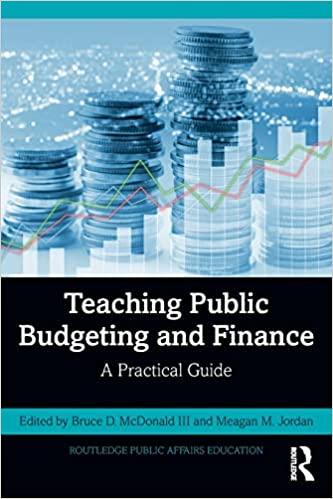Answered step by step
Verified Expert Solution
Question
1 Approved Answer
Objective The following task explores the sensitivity of the U.S. dollar (USD) exchange rates against other currencies based on real interest rates and expected inflation.


 Objective The following task explores the sensitivity of the U.S. dollar (USD) exchange rates against other currencies based on real interest rates and expected inflation. Let Et denote the USD/FOR, where FOR represents a basket of foreign currencies. Such that Et implies a stronger dollar against foreign currencies. Additionally, let i denote domestic interest rates. According to the Fisher Equation, we know that i=ir+e where ir and e denote real interest rate and expected inflation, respectively. Task 1: Data Collection Your first task is gather information for Et,i, and e from FRED based on the following symbols: 1. For Et, refer to the Nominal Advanced Foreign Economies U.S. Dollar Index (DTWEXAFEGS) 2. For i, refer to the Federal Funds Effective Rate (FEDFUNDS) 3. Finally, to measure expected inflation, e, consider 5-Year Breakeven Inflation Rate (T5YIE) The above data collection should correspond to three time series. Before merging the data, make sure each time series is monthly and has a consistent date format. The final merged data should correspond to 208 monthly observations, dating between January 2006 and October 2023. Given the final merged data, compute the real interest rate, ir, with respect to Equation (1). As a summary, provide basic descriptive statistics (e.g., mean, standard deviation, minimum, maximum, etc.) of the final data. Task 2: Modeling Next, you need to develop a simple model or equation that represents the expected relationship between exchange rates, real interest rates, and expected inflation. One possibility is using a linear regression, where the exchange rate can be described as Et=0+1ir+2e+ where denotes the residuals, i.e., the component that is not explained by real interest rates. Without looking at the data, explain briefly what you expect the coefficients 1 and 2 to be (sign-wise). Task 3: Parameter Estimation In the next task, you need to utilize linear regression (i.e., ordinary least squares approach) to estimate coefficients from the model specified in Equation (2). You need to run this regression twice: 1. First, use the full sample of 208 monthly observations. 2. Second, consider a subset of the data that dates between 2010 and 2019 . As a summary, report the estimated coefficients of both regressions along with their their statistical significance. Task 4: Interpretation Given the estimates from the previous task, address the following: 1. How do the estimates correspond to your hypotheses from Task 2 ? 2. Discuss the difference in results between the two regressions. Note that the latter regression excludes two recession periods (global financial crisis and COVID-19). Task 5: Conclusion Briefly summarize your findings and discuss the broader implications of real interest rates and expected inflation on currency valuation
Objective The following task explores the sensitivity of the U.S. dollar (USD) exchange rates against other currencies based on real interest rates and expected inflation. Let Et denote the USD/FOR, where FOR represents a basket of foreign currencies. Such that Et implies a stronger dollar against foreign currencies. Additionally, let i denote domestic interest rates. According to the Fisher Equation, we know that i=ir+e where ir and e denote real interest rate and expected inflation, respectively. Task 1: Data Collection Your first task is gather information for Et,i, and e from FRED based on the following symbols: 1. For Et, refer to the Nominal Advanced Foreign Economies U.S. Dollar Index (DTWEXAFEGS) 2. For i, refer to the Federal Funds Effective Rate (FEDFUNDS) 3. Finally, to measure expected inflation, e, consider 5-Year Breakeven Inflation Rate (T5YIE) The above data collection should correspond to three time series. Before merging the data, make sure each time series is monthly and has a consistent date format. The final merged data should correspond to 208 monthly observations, dating between January 2006 and October 2023. Given the final merged data, compute the real interest rate, ir, with respect to Equation (1). As a summary, provide basic descriptive statistics (e.g., mean, standard deviation, minimum, maximum, etc.) of the final data. Task 2: Modeling Next, you need to develop a simple model or equation that represents the expected relationship between exchange rates, real interest rates, and expected inflation. One possibility is using a linear regression, where the exchange rate can be described as Et=0+1ir+2e+ where denotes the residuals, i.e., the component that is not explained by real interest rates. Without looking at the data, explain briefly what you expect the coefficients 1 and 2 to be (sign-wise). Task 3: Parameter Estimation In the next task, you need to utilize linear regression (i.e., ordinary least squares approach) to estimate coefficients from the model specified in Equation (2). You need to run this regression twice: 1. First, use the full sample of 208 monthly observations. 2. Second, consider a subset of the data that dates between 2010 and 2019 . As a summary, report the estimated coefficients of both regressions along with their their statistical significance. Task 4: Interpretation Given the estimates from the previous task, address the following: 1. How do the estimates correspond to your hypotheses from Task 2 ? 2. Discuss the difference in results between the two regressions. Note that the latter regression excludes two recession periods (global financial crisis and COVID-19). Task 5: Conclusion Briefly summarize your findings and discuss the broader implications of real interest rates and expected inflation on currency valuation Step by Step Solution
There are 3 Steps involved in it
Step: 1

Get Instant Access to Expert-Tailored Solutions
See step-by-step solutions with expert insights and AI powered tools for academic success
Step: 2

Step: 3

Ace Your Homework with AI
Get the answers you need in no time with our AI-driven, step-by-step assistance
Get Started


